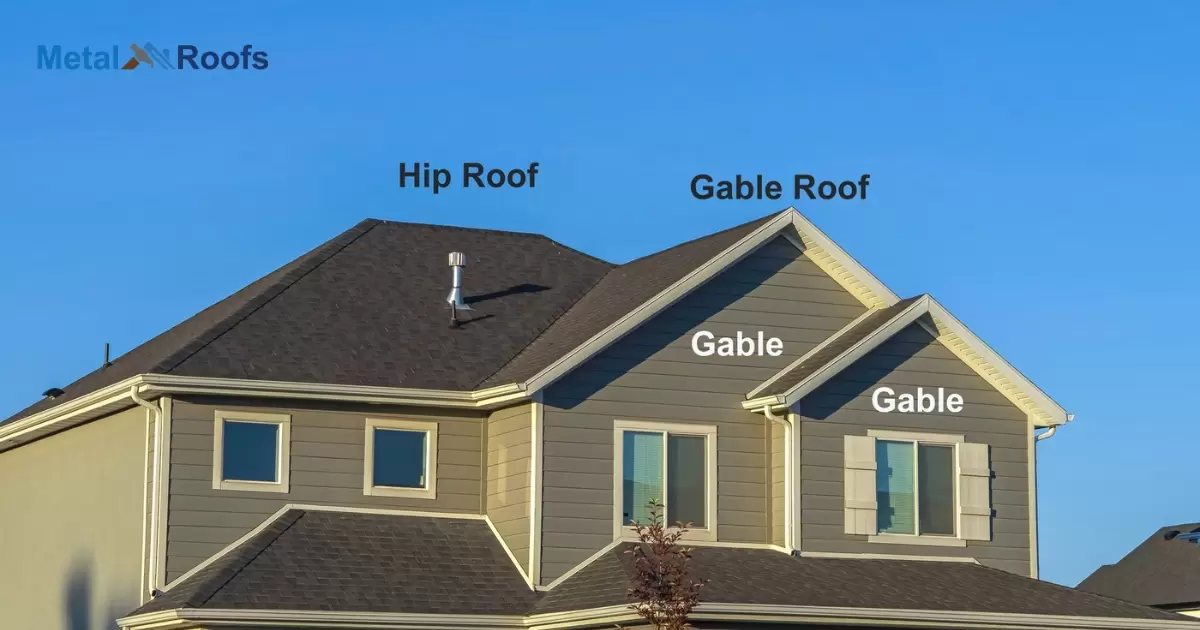A gable roof is a roof with two slopes that meet at a central ridge. One slope directs rainwater to the eaves on one end of the house; the other slope directs it to the opposite end. The end walls each have a gable, which is the triangular wall section under the pitches.
The peaked gable stands out next to the sloped hip roof, though both timeless styles remain popular options. Homeowners weigh factors like budget and aesthetics when evaluating a gable roof vs. hip roof. Their distinct outlines have shielded homes in style through changing tastes over decades.
Gable roofs slope down from a central ridge line, usually at a pitch between 4:12 and 12:12 rise over run. This allows snow and rain to slide off into the eaves and gutters on both ends. The pitch can vary but is typically steep enough to facilitate drainage.
Key Takeaways
- Gable roofs are budget-friendly and straightforward to build.
- Hip roofs offer added stability, making them ideal for windy regions.
- Gable roofs may be more vulnerable to wind damage.
- Hip roofs, while costlier, provide durability and reduced maintenance.
- The choice depends on balancing budget constraints with weather resilience.
What is a Hip Roof?
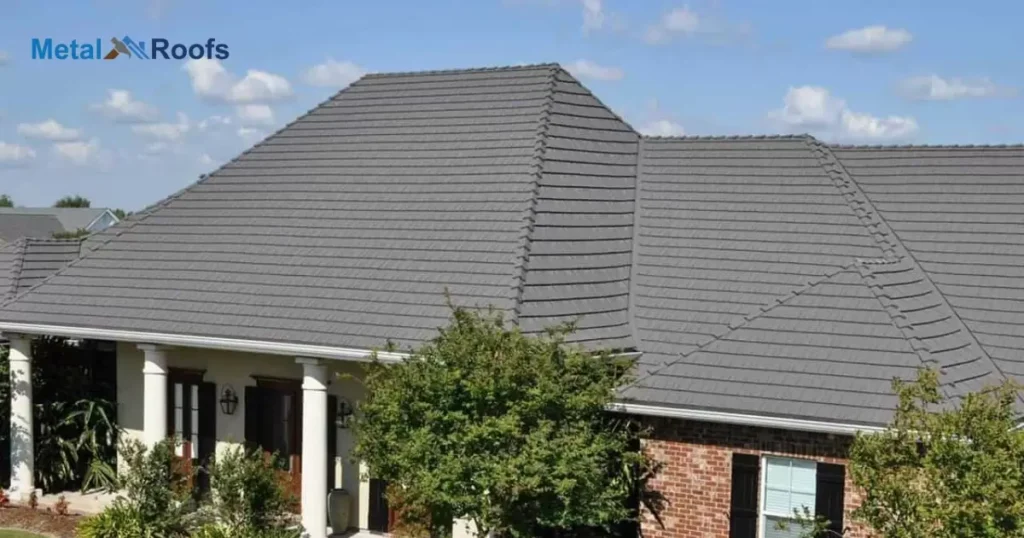
A hip roof slopes down from a ridge to the walls on all four sides. The diagonal intersections where the slopes meet are called hips, distinct from the gable ends on a gable roof. Hip roofs tend to be complex to frame but durable.
The pitch of a hip roof is usually lower than that of a gable, between 3:12 and 6:12 rise to run. The gentler slope allows hip roofs to resist strong winds better through their aerodynamic shape. Though intricate in design with their equal four-sided form, properly built hip roofs outlast many gable roofs.
Types of a Hip Roof
Pyramid hip roof: Slopes evenly on all 4 sides to a central peak
Clipped hip roof: One or more sides are clipped to allow space for other features
Materials: Metal, asphalt shingles, clay tile, slate, etc. Impact cost and durability
Homeowners choose materials that fit their budget and complement the house.
Half-hip roof: Only 2 equal sides sloping down at right angles
Cross hipped roof: Two sets of opposing hip rafters intersecting
Many variations and custom options make each hip roof unique.
What is a Gable Roof?
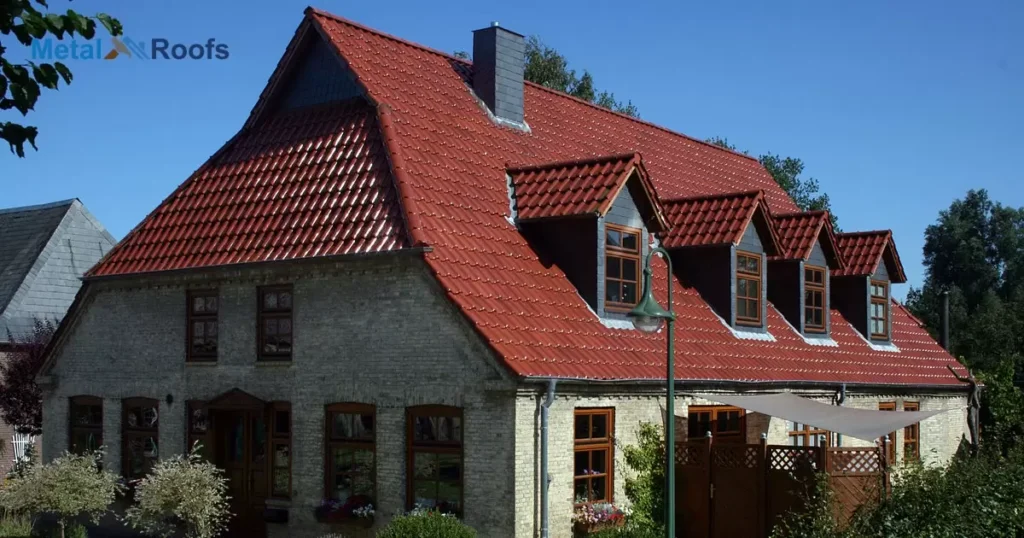
A gable roof features two sloping sides that join at a central ridge line. The ridge runs the length of the house, with the roof planes draining rainwater to either side. At the ends, triangular gable walls are formed where the roof extends to the exterior walls.
Commonly steeper than hip roofs, gable roofs have a slope ratio of 4:12 to 12:12 rise inches per horizontal run inch. This allows the roof to effectively shed snow, leaves, and rainfall into gutters along the eaves. The steep pitch defines the signature gable roof shape.
Types of a Gable Roof
Saddleback gable roof: Basic symmetrical two-sided roof with central ridge
Saltbox gable roof: Two unequal roof pitches, longer in front
Side gable roof: Ridge runs parallel to longer walls
Gambrel roof: Two shallow and two steep roof pitches per side
Shed style: Single sloping roof plane tied into main roof
Gables over entries, dormers, and garages can be customized.
Front gable: Gable end faces the front
Cross gable: Two intersecting gable ends
Many variations are possible by altering pitch and integrating additions.
Can a Roof Have Hips and Gables?
A roof can have hips and gables. Hips are slopes on all four sides, while gables are the triangular ends. They work together, creating a stylish and functional roofing design.
The combination of hips and gables adds architectural flair. Hips keep rainwater flowing, while gables offer ventilation. In short, a roof with hips and gables is both practical and visually appealing.
Hip Roof vs Gable Roof Chart
A hip roof slopes on all four sides, offering stability against strong winds. This design suits areas prone to hurricanes or high winds. In contrast, a gable roof has two slopes meeting at the ridge, making it simpler but potentially more vulnerable to wind damage.
When comparing the two, a chart helps visualize the differences. Factors like cost, wind resistance, and aesthetics are laid out for easy comparison. Homeowners can use this chart to decide which roof type best suits their needs and preferences.
Advantages of Hip Roof
- Wind stability slopes on all sides make hip roofs resilient in windy conditions.
- Durability is ideal for areas prone to hurricanes or strong winds, offering long-lasting protection.
- Energy efficiency provides better shade and ventilation, enhancing energy efficiency in hot climates.
- Water drainage is less prone to leaks and water damage, thanks to the sloping design that facilitates effective water drainage.
Disadvantages of Hip Roof
- Complex construction, such as building a hip roof, can be more intricate and may require skilled labor.
- Higher cost The complexity of construction often results in higher costs compared to simpler roof designs.
- Reduced interior space The sloping sides of a hip roof can limit the usable interior space.
- Maintenance challenges Accessing and maintaining a hip roof can be challenging due to its steep slopes.
Advantages of Gable Roof
- Simplicity gable roofs have a straightforward design, making construction less complex and more cost-effective.
- Ample Interior space The triangular shape of gable roofs provides more headroom and the potential for additional living space.
- Easy maintenance Gable roofs are easier to maintain and repair due to their simple structure and easy access.
- Effective water drainage The steep slope allows for efficient water runoff, reducing the risk of water-related issues.
Disadvantages of Gable Roof
- Wind vulnerability: gable roofs may be more susceptible to wind damage, especially in areas with high winds or hurricanes.
- Limited stability The design of gable roofs can be less stable than hip roofs, particularly in extreme weather conditions.
- Potential leaks Gable roofs may be more susceptible to leaks, as the intersecting slopes can create areas where water can penetrate.
- Aesthetically monotonous, some may find the simple, repetitive design of gable roofs less visually interesting compared to other roof styles.
What are Factors to Consider with Hip and Gable Roofs?
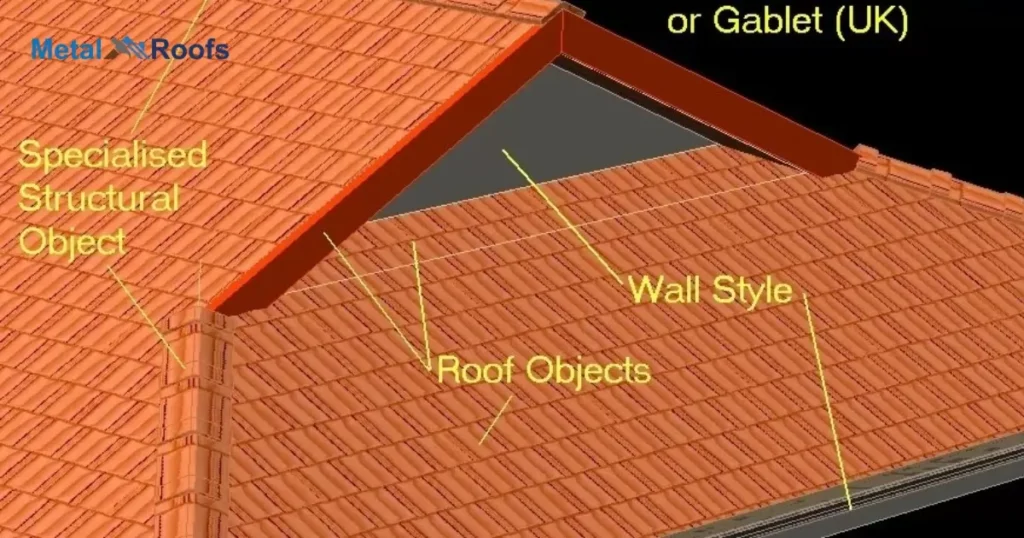
When choosing between hip and gable roofs, consider your location’s weather. Hip roofs excel in windy areas, offering stability against strong gusts. Gable roofs, on the other hand, are simpler but may be vulnerable to wind damage.
Hip roofs, with their complex design, tend to be more expensive to build. Gable roofs, with a simpler structure, are often more budget-friendly. Carefully weighing these factors helps you pick the roof that suits both your climate and your wallet.
Major Differences Between Hip Roofs And Gable Roofs
Hip roofs and gable roofs differ significantly in design. A hip roof with slopes on all four sides provides better stability against strong winds, making it ideal for areas prone to hurricanes.
On the other hand, a gable roof has a simpler design with two slopes meeting at the ridge, making it more cost-effective and easy to build.
When comparing the two, key distinctions emerge. The construction of hip roofs is more complex and can be costlier, while gable roofs offer simplicity and cost savings.
Hip roofs excel in wind resistance, while gable roofs may be more vulnerable. These differences is crucial for homeowners deciding on the most suitable roof for their needs.
Is A Hip Roof Vs Gable Roof Better For My Home?
Choosing between a hip roof and a gable roof depends on your priorities. If stability against wind is crucial, a hip roof with slopes on all sides is a robust choice, ideal for windy areas.
On the other hand, if simplicity and cost-effectiveness matter more, a gable roof with its straightforward design might suit your needs better.
Consider factors like construction complexity, cost, and the desired aesthetic. A hip roof offers durability and energy efficiency but may be pricier and more intricate to build.
Meanwhile, a gable roof is simpler and more cost-effective, providing ample interior space, but it might be more vulnerable to wind and less aesthetically straightforward. The decision rests on what aspects matter most for your home.
Gable Roof Vs Hip Roof Cost
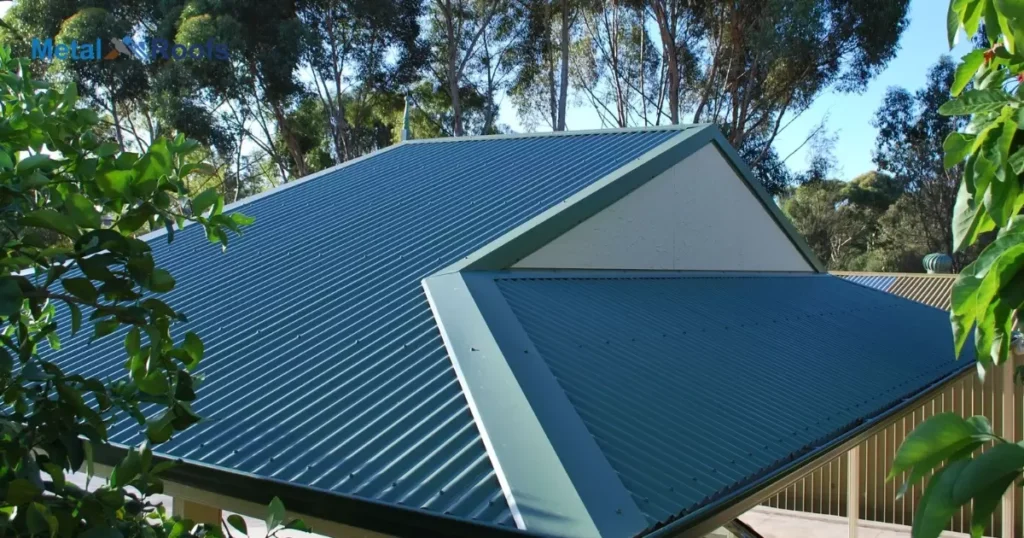
| Cost Aspect | Gable Roof Cost | Hip Roof Cost |
| Average Cost (per sq ft) | $15 to $30 | Roughly 40% more than a gable roof |
| Materials | Metal panel roofing ($9.50 to $14.00 per sq ft) | Higher cost due to complex design and construction |
| Wood shakes ($6.75 to $10.15 per sq ft) | ||
| Asphalt shingles ($2.25 to $6.50 per sq ft) | ||
| Insurance Savings | Potential small cost savings on homeowner’s insurance for Hip Roofs in windy areas |
The average cost to build a gable roof is between $15 and $30 per square foot. This covers the wood roof deck, the rafters or trusses, and the installed roofing material of your choosing (materials and labor):
The most commonly used materials are metal panel roofing ($9.50 to $14.00 per square foot with an average cost of approximately $12.75), wood shakes ($6.75 to $10.15 per square foot with an average cost of roughly $8.35), and asphalt shingles ($2.25 to $6.50 per square foot with an average cost of approximately $3.75).
See more about the comparison between rolled roofing and shingles and metal roofs against shingles. For the reasons mentioned above, the estimated total cost of a hip roof is roughly 40% more than that of a gable roof.
As a partial offset, a hip roof will usually qualify for small cost savings on your homeowner’s insurance in areas where roof damage from high winds is joint.
hip roof versus gable
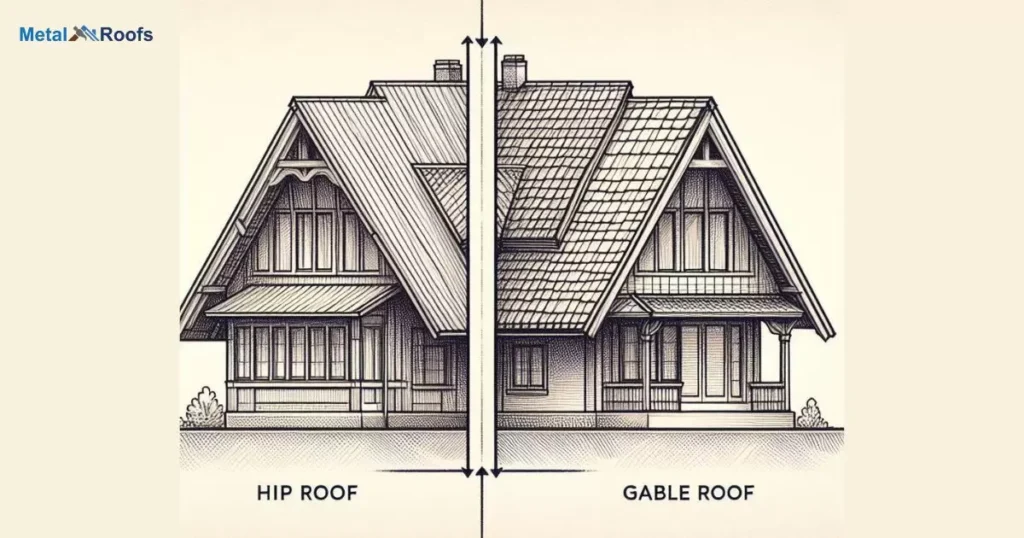
A hip roof has slopes on all sides, making it sturdy in windy areas. It’s more complex to build but offers better stability. On the other hand, a gable roof has two slopes meeting at a ridge, creating a triangular shape. It’s easier to construct and provides good ventilation.
In terms of aesthetics, a hip roof gives a more modern look while a gable roof has a classic appearance. The choice between them depends on factors like climate, architectural style, and personal preference. Both designs have their advantages and can enhance the overall appeal of a building.
gable vs hip roof insurance
When it comes to insurance, gable and hip roofs can affect premiums differently. Gable roofs, with their simpler construction, may have lower insurance costs due to easier repairs. However, they can be more susceptible to wind damage.
On the other hand, hip roofs are often considered more durable in high-wind areas, potentially leading to lower insurance rates. Their complex design may require more expensive repairs, but they offer better protection against weather elements like snow buildup.
Insurance providers typically consider factors like roof age, materials, and local weather conditions when determining premiums for both gable and hip roofs. It’s essential to discuss these aspects with your insurance agent to understand how your roof type can impact your coverage and costs.
Frequently Asked Questions
Is hip roof more expensive than gable?
Yes, hip roofs are typically more expensive than gable roofs due to their complex design and added construction requirements.
Which roof is best a gable roof or a hip roof?
The choice between a gable roof and a hip roof depends on priorities. Opt for a gable roof for cost-effectiveness, while a hip roof offers enhanced stability, especially in windy conditions.
What is the cheapest type of roof to build?
Gable roofs are typically the cheapest to build due to their simple design, making them a cost-effective option for homeowners on a budget.
Conclusion
In comparing Gable Roof vs. Hip Roof, the decision hinges on various factors. Gable roofs are known for their simplicity and cost-effectiveness, making them a popular choice for budget-conscious homeowners. Vulnerability to wind damage should be considered, especially in windy regions.
Hip roofs offer added stability and durability, making them suitable for areas prone to strong winds and adverse weather conditions. While they may come with a higher price tag, the investment can pay off in terms of long-term resilience and reduced maintenance.
